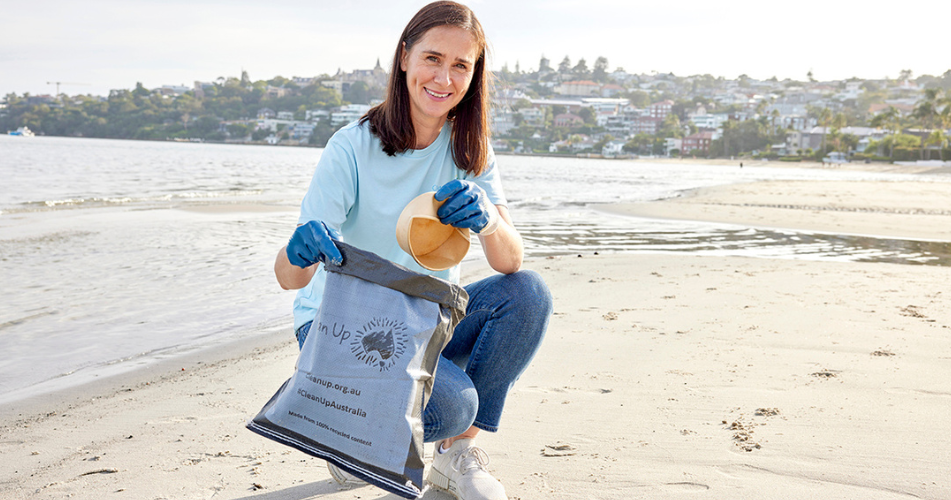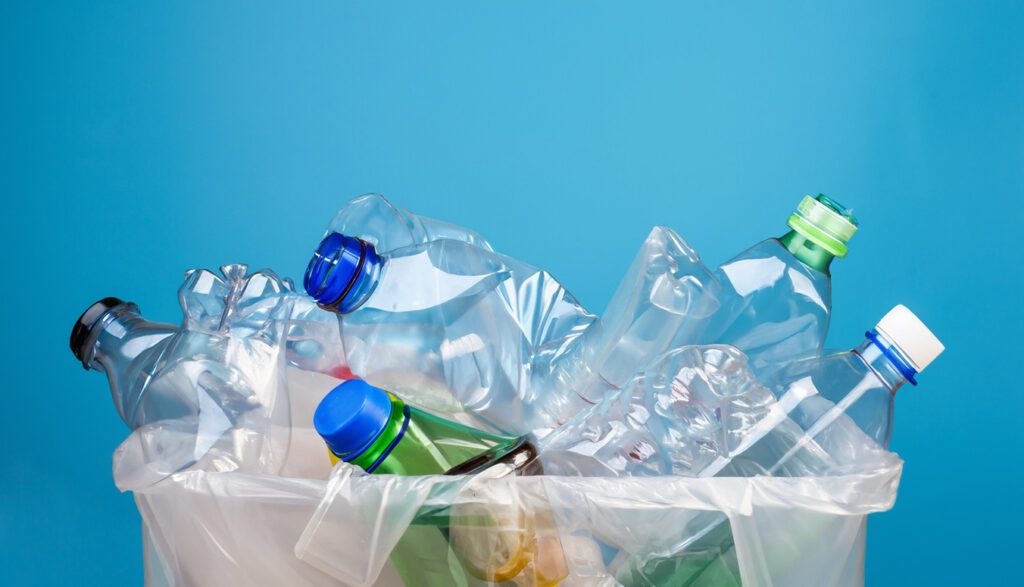Small acts and practical action are an antidote to ecoanxiety
A Sustainability Journey, Social & Environmental Services
A Sustainability Journey, Social & Environmental Services
This is a sponsored article from SustainabilityTracker.com member Clean Up Australia.
This article is written by Clean Up Australia’s Chair Pip Kiernan GAICD.
As a charity, Clean Up Australia is unique in our strength in building community. There’s nothing quite like getting out shoulder to shoulder and doing something practical with others for the environment. It’s incredibly empowering – surrounding yourself with friends, family and neighbours, pulling on a pair of gloves and getting to work.

Image of Pip Kiernan GAICD – sourced from Clean Up Australia.
We live in an age where you can do so much from home alone at your computer. There are benefits to that – but it can be a lonely existence. It can also be overwhelming. We are bombarded with negative messaging about the environment. Too much negativity can cause us to become despondent and give up.
That’s where Clean Up Australia comes in. It’s uplifting to think that as an individual, or as a team, you can make a difference – you can care for a particular park or street that is important to you, or that needs a bit of love and attention. Cleaning up brings people together. Some of our most dedicated volunteering groups use English as a second language, and participants range from children, to upwards of 90 years old.
Positive practical action also instils young people with a sense of pride and hope. It propels them on a sustainability journey. You might start with a Clean Up, and progress from there, with a renewed sense of the reality of the problem.
And it’s a big problem – there is litter in our streets, our waterways and our bushland. Plastics are the biggest issue. We know from our most recent Litter Report that plastics make up 81% of all litter surveyed by our volunteers across the country. Soft plastics are the biggest contributor, with cigarette butts and beverage bottles other commonly littered items. Vapes are another growing problem – we’ve seen a big increase on the number of sites that they’re collected from. With electronic components, plastic and hazardous chemicals, vapes represent a uniquely challenging environmental – and health – hazard to tackle.
Clean Ups play such an important role in the community, and in conserving biodiversity – by removing litter, we’re reducing the harmful impact on vulnerable seabirds and marine creatures. But there is a burning need to stop waste at the source – at the design and production point – before it becomes litter or ends up in landfill.
Our approach to materials and products in the western world is so destructive. It’s a linear approach – a take-make-waste economy, where materials are extracted from the Earth, made into products, and eventually thrown away. In Australia, CSIRO reports that our circularity rate is sitting at 4%, which is half of the global average. This means that only 4% of what we consume is not a virgin resource.
We are the world’s biggest consumer of textiles per capita, and the world’s second highest consumer of bottled water per capita, despite having access to high-quality, free drinking water. Australia is the second highest generator of single-use plastic waste per capita in the world, after Singapore, with each Australian producing approximately 60kg of plastic waste each year.

It’s our aspiration to change that. Clean Up Australia has evolved and alongside our Clean Ups, we’ve made it our mission to eliminate waste. As a known and loved organisation with a 34-year history, we’re in a unique position to talk to community. We are a trusted voice on the environment and on Australia’s waste challenges. We speak to these challenges through our commentary in the media, and through our own channels, including the Clean Up Australia website, social media and blogs.
There are every day changes we can all make to lighten our footprint on the planet.
One of the most powerful things we can do is stop before buying something and think – do I need it? Can I repurpose something I already own? Or repair, borrow, buy second-hand? We talk about the waste hierarchy for the efficient use of resources, and often there’s a focus on recycling. But it’s the things like avoidance, reduction and repair which are the most desirable actions.
Clean Up Australia strongly advocates for the right to repair products and equipment, including access to parts, and extended warranties. It’s part of living an independent and sustainable life – being able to mend, fix and extend the life of products we have. The Australian Repair Network has done a great job setting up an interactive map of community initiatives and repair cafes in Australia. But we still have a long way to go in this country – in France, there’s something called a repair label, which indicates repairability upon purchase.
I’d like to see Australia recapturing more of our resources and reusing them again and again. That comes down to good design. You must start with the right design and materials and ensure that responsibility for the end of life – or recovery – of products is on the producer. These concepts are not new – my dad, Ian Kiernan who founded Clean Up Australia in ‘89, was talking about these concepts when I was a child.
I don’t think he could ever have imagined the success of that first Clean Up event, when he rallied 40,000 people to Clean Up Sydney Harbour. He was a hardworking, generous and visionary man. And it’s his founding principles which continue to guide us today. We’re a grassroots organisation that drives positive and practical action, and we belong to the community. And we actively work with businesses and the political leaders of the day to achieve great change.
Dad always thought it was a fragile land and we have a duty of looking after it. He often worked alongside Aboriginal community leaders and had a great respect for Aboriginal knowledge and heritage. I’d like to continue that story.
Next year, it’s our 35th anniversary and we’re celebrating with the launch of our Clean Up Australia Community Awards, recognising some of the incredible individuals, groups, schools and councils who have contributed. We’re also on a quest to gather more support. Our volunteers already put in the hard yards, but as our volunteer body grows, so too do our costs – we’re sending out free kits all year round, from the tip of the Top End to the bottom of Tassie!
We need all the support we can get. After all, we’ve got so much to do!
This is an article from a SustainabilityTracker.com Member. The views and opinions we express here don’t necessarily reflect our organisation.